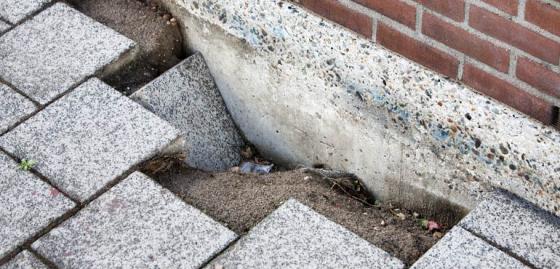
- Home
- Complaints & disputes
- Home warranty for defective work
Home warranty for defective work claims
If you are eligible for a claim, home warranty insurance can cover the cost of repairs or compensate you for faulty or defective work in residential construction work projects. Learn about limits of claims and cover.
Claims process
Before we can assess defective work for a claim against home warranty insurance:
- You must:
- give your contractor written notice of every defective or unfinished item (e.g. by email or letter). The notice must give a timeframe (e.g. 14 days) for the contractor to rectify the items (not required if they are bankrupt, liquidated, deregistered or deceased).
- notify the contractor of the defects and allow reasonable opportunity for them to be rectified.
- lodge a defective work complaint with us and participate in our dispute resolution process.
- We must:
- decide whether to direct the licensed contractor to rectify the work.
However, there is no need to do this if the contractor is unable to rectify (e.g. where they have died or are no longer in business because they are deregistered or in liquidation).
Time limits for claims and cover
You must lodge your defective work complaint within set time frames to be eligible for a defective work home warranty claim. The time frame differs depending on whether the defect is structural or non-structural.
There are 2 timeframes to be aware of:
- the period of cover (the amount of time the insurance is valid for)
- the timeframe within which you must lodge your claim after noticing a defect.
Structural defect claims
For policies taken out since 28 October 2016, cover extends for 6 years 6 months from whichever is the earliest of:
- the date of the contract
- the date of payment of the premium
- date the work commences.
The period of cover may be extended where the work takes longer than 6 months to complete.
Claims must be lodged with the QBCC within 3 months of noticing the defect.
This means you must:
- notice the defect within this 6 year 6 month period (or a possible extended period if construction took more than 6 months to complete, depending on when you took out the insurance)
- lodge a complaint with us within 3 months of noticing the defect.
Non-structural defect claims
Cover extends for 6 months from the date the works were completed.
Claims must be lodged with the QBCC within 7 months of the completion date.
This means you must:
- notice the defect within 6 months from the date the works were finished
- lodge a complaint with the QBCC within 7 months of the date the works were finished.
Building work covered
We will pay to rectify defects in the residence or other building on the site (such as a shed). We will also pay to rectify defects to either of these buildings, which involve any of the following:
- anything attached to these buildings that requires building or plumbing approval
- anything attached to these buildings and that is not supported by anything else (e.g. awning or handrail)
- anything attached to these buildings that is used for water supply, sewerage, drainage or stormwater
- a verandah or deck attached to these buildings
- stairs or a ramp providing access to these buildings
- work to support these buildings (e.g. replacing stumps)
- structural defects in the erection, construction or installation of a swimming pool.
The following work is not covered for defects:
- fire alarm system, scaffolding, curtains, blinds, internal shutters, carpets, floating floors, vinyl, earthmoving and excavating, laying asphalt or bitumen, insulation, insect screens
- electrical appliances
- cubbyhouse, doghouse, shade sail, phone or data cables, water meter, water tank not used for primary water supply
- construction of a slab that does not include construction of a building on top of it
- any other work associated with the construction of the residence that are not directly part of the residence, eg. driveways, paths, fences.
If your claim for defects is accepted, you may claim accommodation expenses incurred by you while the rectification work is carried out. You can claim this if your home is uninhabitable because the work is defective or will become uninhabitable while the rectification work is carried out.
Limit of building work covered
If the defect is not significant and the work complies with the building code but not with the plans or specifications, then we will pay you for the loss in value of the work (e.g. where the ceiling height is 2.9m but the plans say it should be 3m).
- There is no claim for defects if you unreasonably refuse to allow the licensed contractor (who carried out the defective work) to come back and fix it. Under your contract with the licensed contractor, he/she still has an obligation to complete the work.
- For pools—there is no cover for defects in relation to:
- non-structural defects
- surfacing outside the coping of the pool
- all work associated with the pool (e.g. paving, slides, diving boards)
- steps that are not fixed
- For a shed—if the construction of the slab is performed under a separate contract, then there is no cover for damage to the shed caused by the slab
- There is no cover for damage to the residence or shed that is not directly caused by the work.
Learn about the maximum entitlements we can pay in different scenarios.

